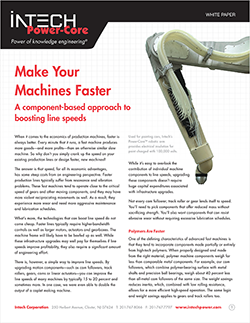This paper takes a deep dive into real world applications where a non lubricated component based approached was used to improve machine design and boost overall productivity, while also lowering total costs.
When it comes to the economics of production machines, faster is always better. Every minute that it runs, a fast machine produces more goods—and more profits—than a similar, slower machine. But speed, for all its economic advantages, can cause problems related to resonance, vibration and wear. The trick to higher speeds, it turns out, is to use better components, or at least components better suited of the application. Better for most people implies more expensive, but a simple and economical way to improve your line speeds is by upgrading the individual motion components, including cam followers, track rollers, gears, cams and linear actuators. This approach can improve the efficiency of your machines, reducing wear, and boost the lines speeds of many machines by 15 to 20 percent—sometimes more. Don't need more speed? The same approach can reduce machine maintenance and increase the life of an entire production system. Like the machines we drive every day, if you don't need the fastest car I'm sure you'll want the most reliable. This paper covers both scenarios.

In this Paper You'll learn:
Privacy Statement. Your details are secure, we won't share this information with anyone